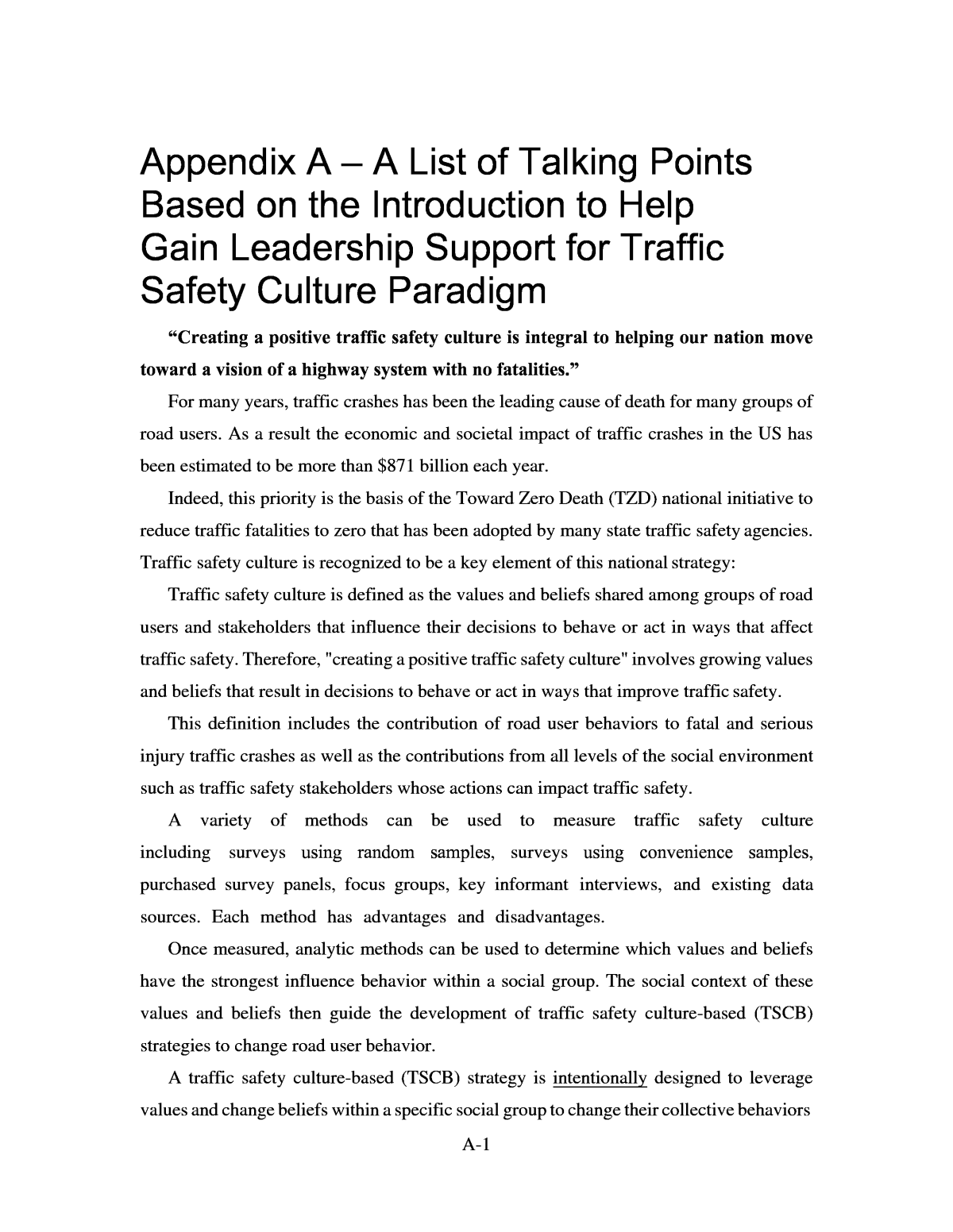

Below is the uncorrected machine-read text of this chapter, intended to provide our own search engines and external engines with highly rich, chapter-representative searchable text of each book. Because it is UNCORRECTED material, please consider the following text as a useful but insufficient proxy for the authoritative book pages.
A-1 Appendix A â A List of Talking Points Based on the Introduction to Help Gain Leadership Support for Traffic Safety Culture Paradigm âCreating a positive traffic safety culture is integral to helping our nation move toward a vision of a highway system with no fatalities.â For many years, traffic crashes has been the leading cause of death for many groups of road users. As a result the economic and societal impact of traffic crashes in the US has been estimated to be more than $871 billion each year. Indeed, this priority is the basis of the Toward Zero Death (TZD) national initiative to reduce traffic fatalities to zero that has been adopted by many state traffic safety agencies. Traffic safety culture is recognized to be a key element of this national strategy: Traffic safety culture is defined as the values and beliefs shared among groups of road users and stakeholders that influence their decisions to behave or act in ways that affect traffic safety. Therefore, "creating a positive traffic safety culture" involves growing values and beliefs that result in decisions to behave or act in ways that improve traffic safety. This definition includes the contribution of road user behaviors to fatal and serious injury traffic crashes as well as the contributions from all levels of the social environment such as traffic safety stakeholders whose actions can impact traffic safety. A variety of methods can be used to measure traffic safety culture including surveys using random samples, surveys using convenience samples, purchased survey panels, focus groups, key informant interviews, and existing data sources. Each method has advantages and disadvantages. Once measured, analytic methods can be used to determine which values and beliefs have the strongest influence behavior within a social group. The social context of these values and beliefs then guide the development of traffic safety culture-based (TSCB) strategies to change road user behavior. A traffic safety culture-based (TSCB) strategy is intentionally designed to leverage values and change beliefs within a specific social group to change their collective behaviors
A-2 related to traffic safety. This intention is evident from the explicit adoption of a behavioral model to guide strategy development. By grounding behavior change within the enduring culture of a social group, the changes in behavior are expected to be more sustainable than traditional traffic safety methods. The alignment of values, beliefs and actions relevant to traffic safety goals across the social environment is the basis of the strategic approach to transform traffic safety culture proposed in this project.
